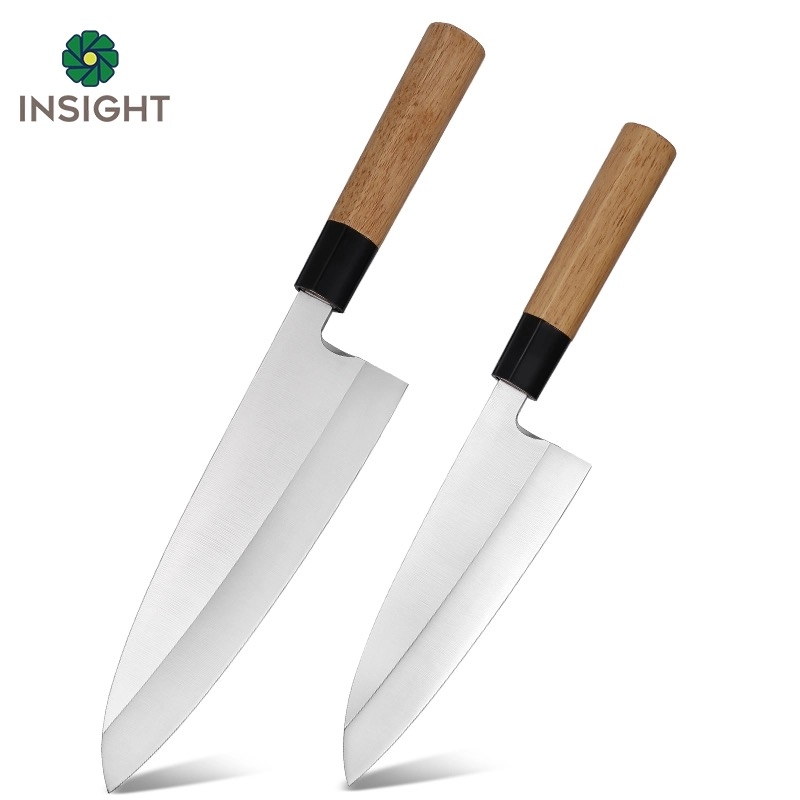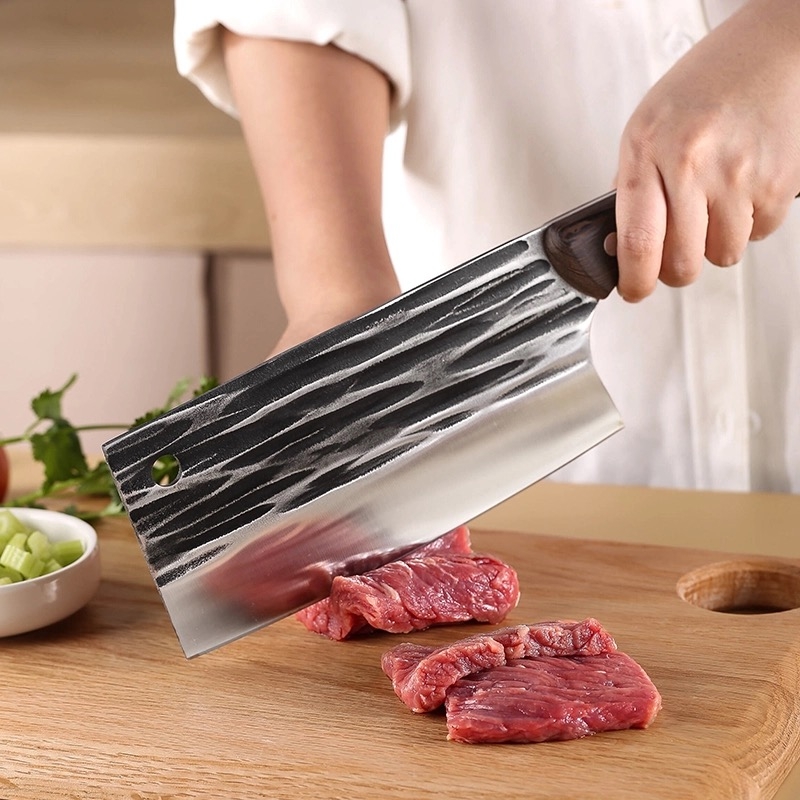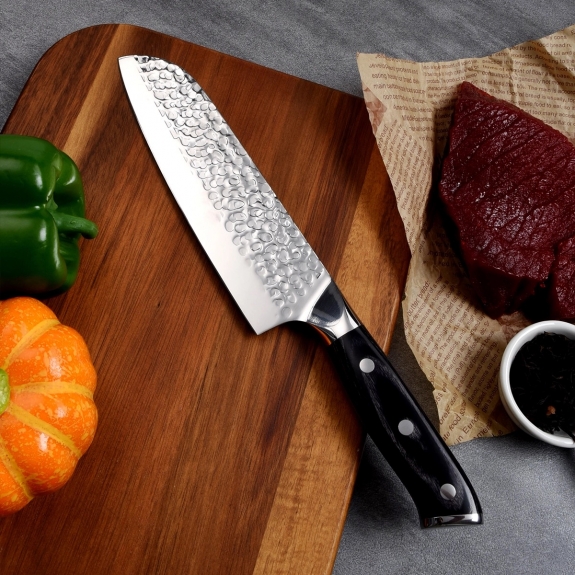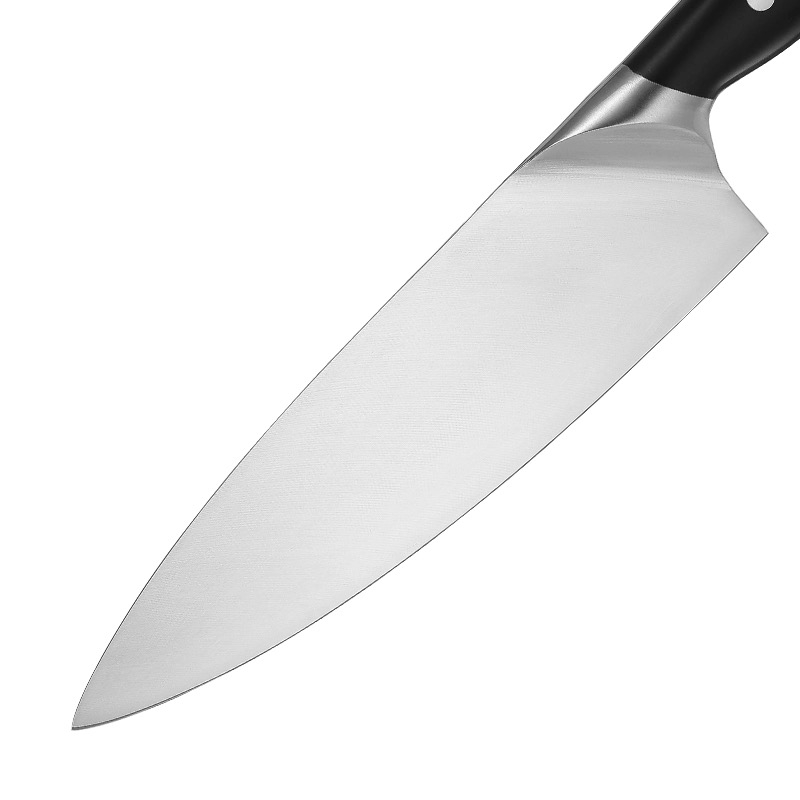Choosing the right kitchen knife is essential for anyone who enjoys cooking, whether you're a novice or a seasoned chef. A good kitchen knife can make food preparation easier, faster, and more enjoyable. In this article, we will explore the various types of kitchen knives, their features, and how to select the best one for everyday use.
Understanding Kitchen Knives
The Importance of a Good Kitchen Knife
A kitchen knife is more than just a tool; it is an extension of the cook's hand. A high-quality knife can enhance your cooking experience by providing precision and control. It allows for smoother cuts, which can improve the presentation of your dishes and reduce preparation time. A well-chosen knife can also help prevent injuries, as a sharp knife is safer than a dull one. When you have the right knife, you can work more efficiently, allowing you to enjoy the cooking process rather than feeling frustrated by inadequate tools.
Types of Kitchen Knives
There are several types of kitchen knives, each designed for specific tasks. Understanding these types will help you choose the right knife for your needs.
Chef's Knife
The chef's knife is the most versatile and commonly used knife in the kitchen. Typically ranging from 6 to 12 inches in length, it is ideal for chopping, slicing, and dicing a variety of ingredients. The broad blade allows for a rocking motion, making it efficient for mincing herbs and garlic. This knife can handle everything from slicing meat to chopping vegetables, making it a staple in any kitchen. Its design allows for a comfortable grip, which is essential for prolonged use, and its weight provides the necessary force for cutting through tougher ingredients.
Paring Knife
A paring knife is smaller, usually around 3 to 4 inches long, and is perfect for intricate tasks such as peeling fruits and vegetables, deveining shrimp, or making decorative cuts. Its size allows for greater control, making it an essential tool for detailed work. The paring knife is particularly useful for tasks that require precision, such as removing seeds from fruits or creating garnishes. Its lightweight design makes it easy to maneuver, and it can be a great companion to the larger chef's knife, allowing for a more comprehensive range of culinary tasks.

Santoku Knife
Originating from Japan, the Santoku knife is similar to a chef's knife but typically has a shorter, wider blade with a flat edge. It excels in slicing, dicing, and mincing, and often features a granton edge, which helps prevent food from sticking to the blade. The Santoku knife is designed for a variety of cutting techniques, including the push-cut and the rocking motion, making it a versatile addition to any kitchen. Its unique design allows for a different cutting experience, and many cooks appreciate its balance and ease of use, especially when preparing Asian cuisine.
Bread Knife
A bread knife features a serrated edge, making it ideal for slicing through crusty loaves without crushing the soft interior. The serrations grip the bread, allowing for clean cuts. This knife is not only useful for bread but can also be employed for slicing cakes and other soft items. The length of a bread knife typically ranges from 8 to 10 inches, providing enough reach to handle larger loaves. A good bread knife can make a significant difference in the quality of your slices, ensuring that your bread remains intact and visually appealing.
Utility Knife
A utility knife is a mid-sized knife that can handle a variety of tasks, from slicing sandwiches to cutting cheese. It is a great all-purpose knife for everyday use. The utility knife often serves as a bridge between the chef's knife and the paring knife, providing versatility without being too specialized. Its size makes it easy to handle for smaller tasks, and it can be a go-to knife for quick jobs in the kitchen, making it an essential tool for any cook.
Features to Consider When Choosing a Kitchen Knife
When selecting a kitchen knife, several features should be taken into account to ensure you choose the best one for your needs.
Blade Material
The material of the blade significantly affects its performance and durability. Common materials include:
Stainless Steel: Known for its resistance to rust and corrosion, stainless steel is a popular choice for kitchen knives. It maintains sharpness well and is easy to care for. Stainless steel knives are often more affordable and require less maintenance, making them a practical choice for everyday use.
High-Carbon Steel: This material is known for its ability to hold a sharp edge longer than stainless steel. However, it requires more maintenance to prevent rust. High-carbon steel knives are favored by many professional chefs for their superior cutting performance and edge retention, but they do require regular oiling and careful storage.
Ceramic: Ceramic knives are lightweight and maintain their sharpness for a long time. They are ideal for slicing fruits and vegetables but can chip or break if dropped. Ceramic knives are often used for specific tasks due to their sharpness and lightweight nature, but they may not be suitable for all kitchen tasks.
Handle Comfort
The handle of the knife should feel comfortable in your hand. Look for ergonomic designs that provide a secure grip. Materials can vary from wood to plastic to metal, each offering different levels of comfort and durability. A comfortable handle can reduce fatigue during extended use, allowing you to work more efficiently. Additionally, the design of the handle can affect your control over the knife, which is crucial for precision cutting.
Balance and Weight
A well-balanced knife feels comfortable and allows for better control during use. The weight of the knife should also be considered; some cooks prefer heavier knives for their cutting power, while others prefer lighter knives for ease of use. The balance of a knife can significantly impact your cutting technique, as a well-balanced knife will require less effort to maneuver. Finding the right weight and balance for your personal cooking style is essential for achieving optimal performance.
Price Range
Kitchen knives come in a wide range of prices. While it can be tempting to opt for the cheapest option, investing in a quality knife can save you money in the long run. A good knife will last for years with proper care. Higher-priced knives often come with better materials and craftsmanship, which can enhance your cooking experience. However, there are also many affordable options that offer great performance, so it is essential to find a balance between quality and budget.

Maintenance of Kitchen Knives
To ensure your kitchen knife remains in top condition, proper maintenance is crucial.
Regular Sharpening
A dull knife is not only inefficient but can also be dangerous. Regularly sharpening your knife will keep it performing at its best. You can use a whetstone, honing rod, or an electric sharpener, depending on your preference. Understanding how to sharpen your knife correctly is vital, as improper sharpening can damage the blade. Regular maintenance will not only prolong the life of your knife but also enhance your cooking experience by making food preparation easier and more enjoyable.
Cleaning and Storage
Always hand wash your knives with mild soap and water, and dry them immediately to prevent rust. Avoid putting them in the dishwasher, as this can damage the blade and handle. Store your knives in a knife block, magnetic strip, or protective sheaths to keep them safe and sharp. Proper storage is essential to prevent accidents and maintain the integrity of the blade. Keeping your knives organized and protected will also make it easier to access them when you need them.
Top Kitchen Knives for Everyday Use
After considering various factors, here are some of the best kitchen knives recommended for everyday use.
Wüsthof Classic 8-Inch Chef's Knife
This knife is renowned for its balance and precision. Made from high-carbon stainless steel, it offers excellent sharpness and durability. The full tang design provides stability, making it a favorite among professional chefs and home cooks alike. The Wüsthof Classic line is known for its craftsmanship, and this particular knife is versatile enough to handle a wide range of tasks, from chopping vegetables to slicing meat. Its ergonomic handle ensures comfort during prolonged use, making it a reliable choice for everyday cooking.

Victorinox Swiss Army 8-Inch Chef's Knife
Known for its affordability and quality, the Victorinox chef's knife features a lightweight design and a comfortable handle. It is versatile enough for various kitchen tasks and is easy to maintain. This knife is often recommended for beginners due to its balance of quality and price. The Victorinox brand is synonymous with reliability, and this chef's knife is no exception. Its sharp blade and comfortable grip make it an excellent choice for anyone looking to enhance their cooking experience without breaking the bank.
Shun Classic 8-Inch Chef's Knife
This Japanese knife is crafted from high-quality VG-MAX steel, providing exceptional sharpness and edge retention. The D-shaped handle offers a comfortable grip, making it a great choice for those who prefer a more traditional style. Shun knives are known for their beautiful craftsmanship and performance, making them a favorite among culinary enthusiasts. The unique design of the Shun Classic knife allows for precise cuts, and its aesthetic appeal adds a touch of elegance to any kitchen.
Global 8-Inch Chef's Knife
Global knives are known for their unique design and lightweight construction. Made from high-quality stainless steel, this knife is easy to maneuver and offers excellent cutting performance. The seamless design of Global knives makes them easy to clean and maintain, and their distinctive look adds a modern touch to any kitchen. The Global 8-inch chef's knife is particularly favored for its balance and sharpness, making it a reliable tool for everyday cooking tasks.
MAC Knife Professional 8-Inch Chef's Knife
The MAC knife is favored for its sharpness and balance. It features a thin blade that allows for precise cuts, making it ideal for both professional chefs and home cooks. MAC knives are often praised for their performance and durability, and this particular model is no exception. The lightweight design and comfortable handle make it easy to use for extended periods, and its ability to maintain a sharp edge makes it a valuable addition to any kitchen.
Selecting the best kitchen knife for everyday use involves understanding the different types of knives, their features, and how to maintain them. A good kitchen knife can significantly enhance your cooking experience, making food preparation more efficient and enjoyable. Whether you choose a chef's knife, paring knife, or any other type, investing in a quality knife will pay off in the long run. Remember to care for your knife properly to ensure it remains a reliable tool in your kitchen for years to come. With the right knife in hand, you can approach your culinary adventures with confidence and creativity, transforming your cooking experience into a delightful journey.

Frequently Asked Questions regarding Kitchen Knife
1. What is the difference between a chef's knife and a Santoku knife?
A chef's knife typically has a longer, curved blade that allows for a rocking motion while cutting, making it versatile for various tasks. In contrast, a Santoku knife has a shorter, wider blade with a flat edge, which is designed for slicing, dicing, and mincing. The Santoku often features a granton edge to prevent food from sticking, making it particularly effective for cutting softer ingredients.
2. How often should I sharpen my kitchen knife?
The frequency of sharpening depends on how often you use your knife and the type of material it is made from. Generally, a good rule of thumb is to sharpen your knife every few months for regular home cooks. If you notice that the knife is not cutting as smoothly or requires more pressure to slice through food, it's time to sharpen it. Regular honing with a honing rod can help maintain the edge between sharpenings.
3. Can I use a kitchen knife for tasks other than cutting food?
While kitchen knives are primarily designed for food preparation, they can sometimes be used for other tasks, such as opening packages or cutting through soft materials. However, it is not advisable to use them for tasks they are not designed for, as this can damage the blade and reduce its effectiveness. Always use the appropriate tool for specific tasks to ensure safety and longevity.
4. What is the best way to clean and maintain my kitchen knife?
The best way to clean a kitchen knife is to hand wash it with mild soap and warm water, then dry it immediately with a soft cloth to prevent rust. Avoid using a dishwasher, as the heat and moisture can damage the knife. For maintenance, regularly sharpen the blade and store it properly in a knife block, magnetic strip, or protective sheath to keep it safe and sharp.
5. Are expensive kitchen knives worth the investment?
Expensive kitchen knives often offer better materials, craftsmanship, and performance compared to cheaper options. They can provide superior sharpness, durability, and comfort, which can enhance your cooking experience. However, it is essential to find a knife that fits your budget and needs. There are many mid-range options that perform well, so it's possible to find a quality knife without spending a fortune. Ultimately, the best knife is one that feels comfortable and meets your cooking requirements.






